Welcome to the
WalkMe Help Center
Please log in to continue

Please log in to continue

The incoming integration of WalkMe with Azure Blob offers a seamless way to import data from Azure, significantly enhancing user experience through advanced personalization and automated updates.
The integration allows you to bring in a diverse range of attributes from Azure, enabling them to create highly customized content. Any updates to these attributes in Azure are automatically synced with WalkMe, ensuring that the content is always relevant and tailored to your needs, without having to manually update.
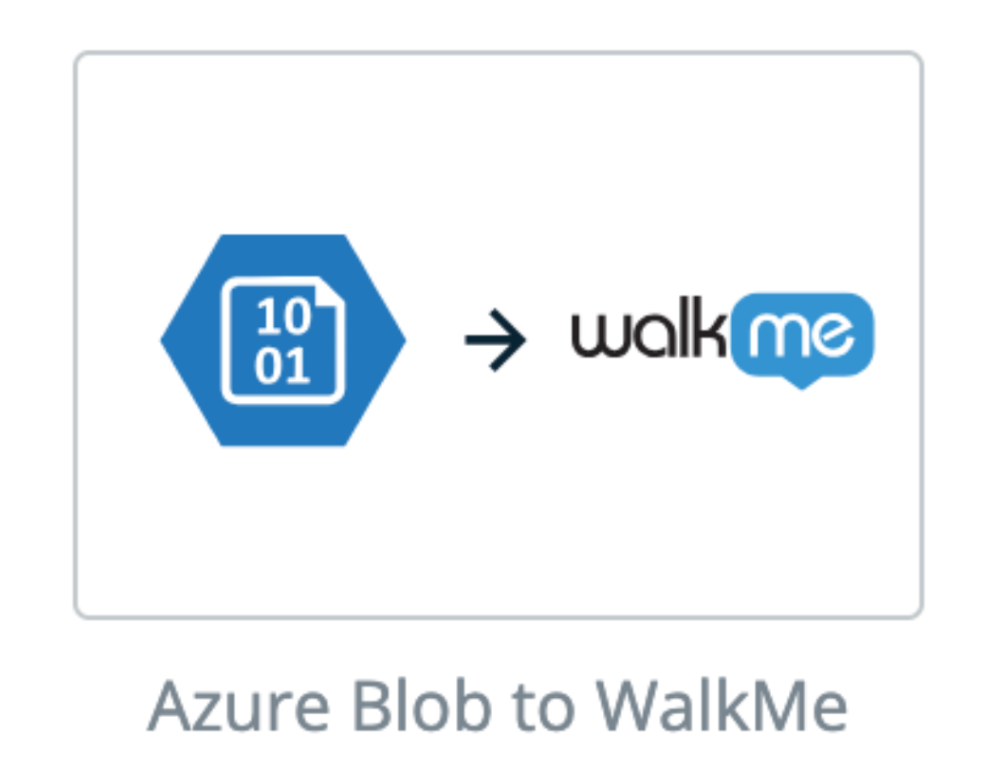
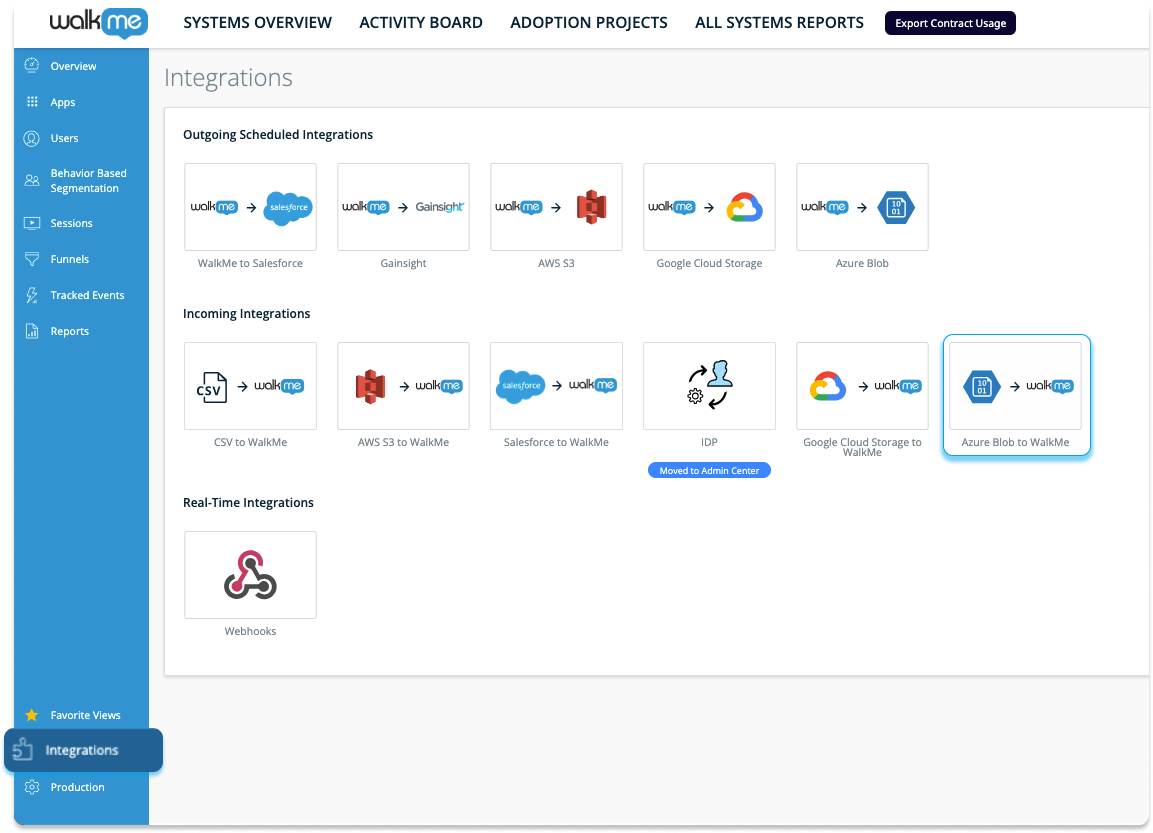
5. Click the NEW INTEGRATION button to get started
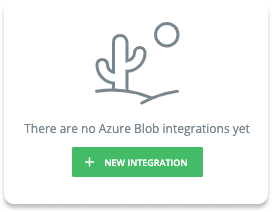
The next step is to create a source in Azure Blob. Meaning, from where the files will be received by WalkMe.
This step can be also performed during Step 3 when adding a new integration.
Information needed to enter:
** The “Container Path” is an optional field.
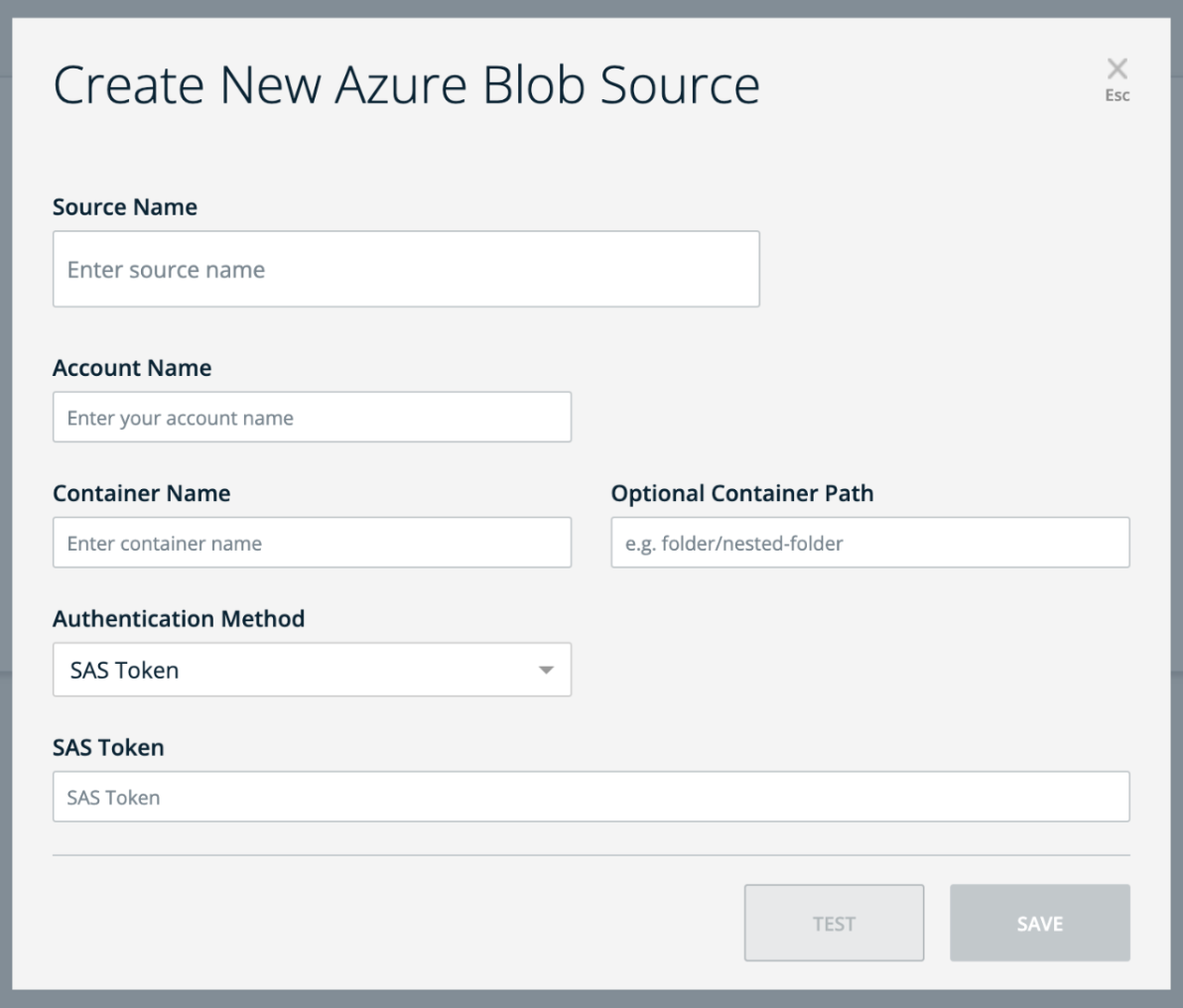
Adding a new integration can be completed in 3 simple steps:
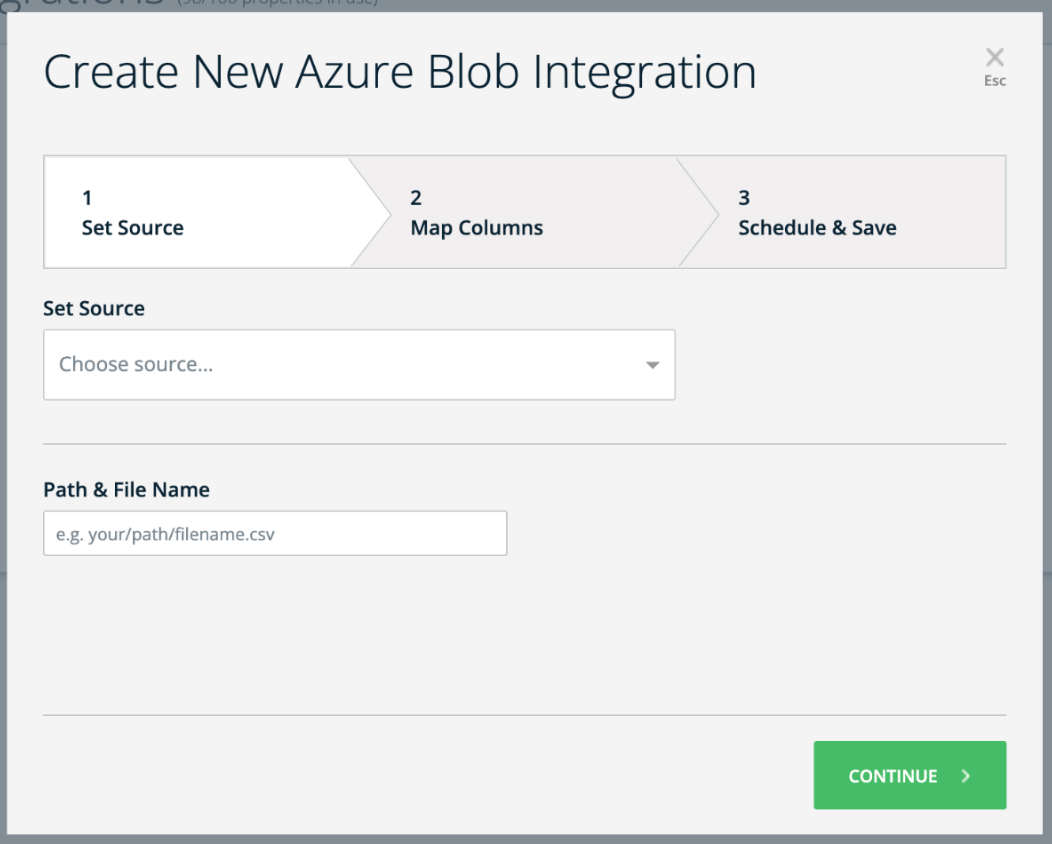
To interact with your Azure Blob Storage, you'll need to generate a Shared Access Signature (SAS) token.
Currently, Multi-system integrations is not supported, but we plan on implementing this in 2025.
If you plan to use a shared file for multiple integrations, it's important to note that you will need to create a separate integration for each file.
Insights has a specific way of processing data for each integration, and it looks for a particular file location. Once the data has been processed, the file is then moved to a designated folder for either "success" or "failed" files within the defined location.
If a second integration tries to access the same file, it won't be able to locate it since the file has already been moved. This will cause the second integration to fail.
To avoid this issue, set up a separate integration for each file, even if they are using the same data source. This will ensure that each integration can access the file it needs without conflicting with other integrations.